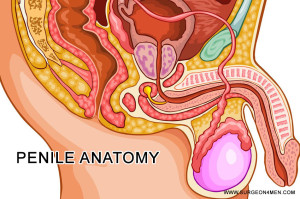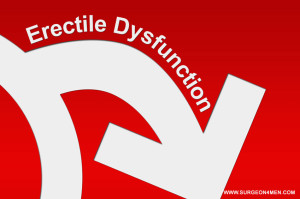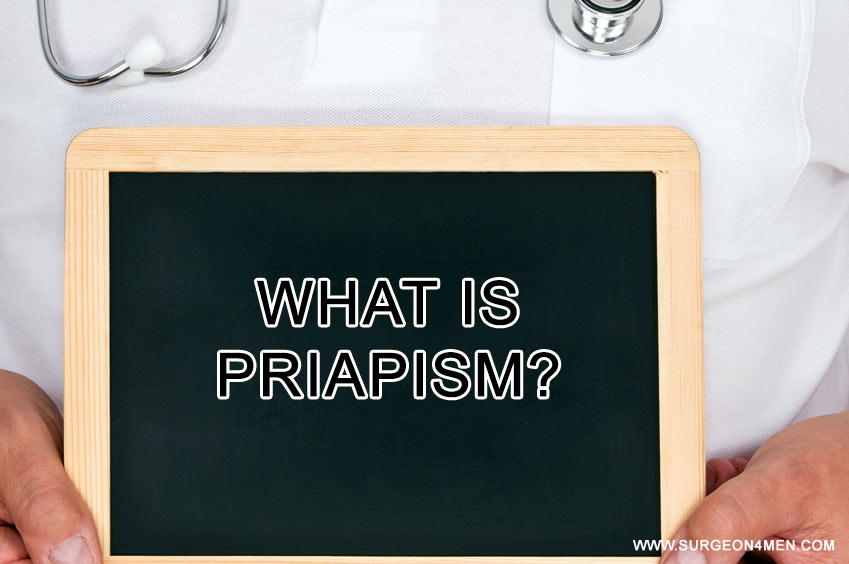What is Priapism?
The biggest dream of every adult male is to last longer in the bed; however, it is imperative to keep in mind that prolonged or sustained penile erection is not always good. The medical condition associated with an increased or prolonged erection of penis is referred to as priapism. It should be noted that unlike traditional penile erection, priapism is almost always associated with moderate to severe pain that is not regulated through sexual arousal.
It should be noted that priapism is a medical emergency and requires immediate attention to minimize the risk of permanent damage to the erectile machinery. This is mainly because, poorly addressed priapism is associated with rupture of penile tissue due to vascular pressure. The incidence of having priapism is most common in younger males (1).
What are Some Classic Symptoms of Priapism?
 The symptomatology and complaints vary from person to person. Clinically, there are two primary varieties of priapism; these are:
The symptomatology and complaints vary from person to person. Clinically, there are two primary varieties of priapism; these are:
-
Ischemic Priapism
This condition is mainly due to compromised blood circulation or veno-occlusive episodes in the penile tissue. The pathophysiology of this type is specific for production and accumulation of abnormal gases (hypercarbic, hypoxic and acidotic) in the cavernous tissues due to a failure of detumescence mechanism. The classic symptoms that are reported in ischemic priapism are:
- Erection with minimal sexual intent or desire which may last for many hours
- The tip of the penis is soft while the body is rigid and tender to touch
Some males may experience persistent priapism that does not resolve without treatment. Some common findings after the resolution of prolonged ischemic priapism are; edema of penis (in the presence of flaccid cavernous tissue), appearance of bruises and recurrent onset of partial erections
-
Non-Ischemic Priapism
This condition takes place when there is a poor regulation of penile inflow of blood. Due to abnormally high rate of blood circulation, this variety of priapism is generally painless. Symptoms of non-ischemic priapism are specific for:
- Erection of penis which may last for hours
- The cavernous tissue is not entirely rigid
- Most cases are associated with a recent history of penile or inguinal trauma
The classic feature that helps in differentiating non-ischemic variety from ischemic type of priapism is absolute return to normal flaccid penis once the erection is over.
-
Stuttering Priapism
Also referred to as intermittent priapism is a sub-type of ischemic priapism that is associated with recurrent episodes of painful penile erection with intervening periods of flaccid penis.
When to See a Doctor
It is highly recommended to consult a medical professional as early as possible if you are experiencing persistent erection for a period of more than four hours (especially if the persistent erection is associated with pain or discomfort).
What are Primary Causes of Priapism?
 There are several pharmacological and medical causes of prolonged erection. Physiologically, normal erection is the result of progressive in-flow of blood in the penis that leads to expansion of cavernous sinuses. The erection is released/terminated as soon as the blood is drained out from the sinuses after the ejaculation. However, in some cases, the normal circulatory forces are disturbed that may compromise the erection phase and/ or release phase.
There are several pharmacological and medical causes of prolonged erection. Physiologically, normal erection is the result of progressive in-flow of blood in the penis that leads to expansion of cavernous sinuses. The erection is released/terminated as soon as the blood is drained out from the sinuses after the ejaculation. However, in some cases, the normal circulatory forces are disturbed that may compromise the erection phase and/ or release phase.
Some frequently reported causes of prolonged erection are:
-
Blood Disorders
Following are some blood related conditions that are usually implicated in the pathogenesis of priapism in males;
- Sickle cell anemia: The sickling of blood in conditions of lower oxygen tension is associated with vascular deficits and prolonged erection. It is one of the most common causes of priapism in young males (1).
- Leukemia
-
Medications
A number of pharmacological agents are reportedly associated with higher risk of priapism as a side effect. Common pharmacological agents include:
- Medications which are frequently prescribed in the treatment of erectile dysfunction such as sildenafil (available as Viagra).
- Intravenous medicines which are directly administered in penis such as papverine.
- Antidepressants medications such as fluoxetine.
- Medications used in the management of psychotic disorders such as risperidone, clozapine, olanzapine and topiramate (2).
- Blood thinning agents/medications such as warfarin.
-
Alcohol and Drug Abuse
- Excessive use of alcohol
- Use of psychoactive drugs such as marijuana etc.
-
Local Injury
- Any trauma or injury in the genital region can lead to compromised blood flow across the inguinal region; thereby increasing the risk of priapism several folds.
-
Other Related Factors
Other common factors that are less frequently associated with priapism are:
- Spinal cord trauma or injury
- Blood clotting issues
- Venom in systemic circulation
 Complications of Priapism
Complications of Priapism
Healthcare providers recommended extreme caution in individuals who experience recurrent episodes of priapism. This is mainly because; sustained penile contraction and pooling of blood leads to:
- Irreversible damage to the cavernous tissues
- Permanent erectile dysfunction
- Penile disfigurement due to fibrosis of penis
How to Minimize the Risk of Experiencing Priapism?
Following steps can be taken to prevent priapism:
- Treat the root cause (which is causing the prolonged erection)
- Speak to your primary care provider of you think the priapism (or prolonged erection) is the result of prescription medications
- Avoid intake of alcohol
- Use of injections of phenylephrine
References:
- Furtado, P. S., Costa, M. P., do Prado Valladares, F. R., da Silva, L. O., Lordêlo, M., Lyra, I., & Barroso, U. (2012). The prevalence of priapism in children and adolescents with sickle cell disease in Brazil. International journal of hematology, 95(6), 648-651.
- Compton, M. T., Saldivia, A., & Berry, S. A. (2014). Recurrent priapism during treatment with clozapine and olanzapine.
- Anele, U. A., & Burnett, A. L. (2015). Erectile Dysfunction after Sickle Cell Disease–Associated Recurrent Ischemic Priapism: Profile and Risk Factors. The journal of sexual medicine.
- Burnett, A. L., Anele, U. A., Trueheart, I. N., Strouse, J. J., & Casella, J. F. (2014). Randomized controlled trial of sildenafil for preventing recurrent ischemic priapism in sickle cell disease. The American journal of medicine, 127(7), 664-668.

